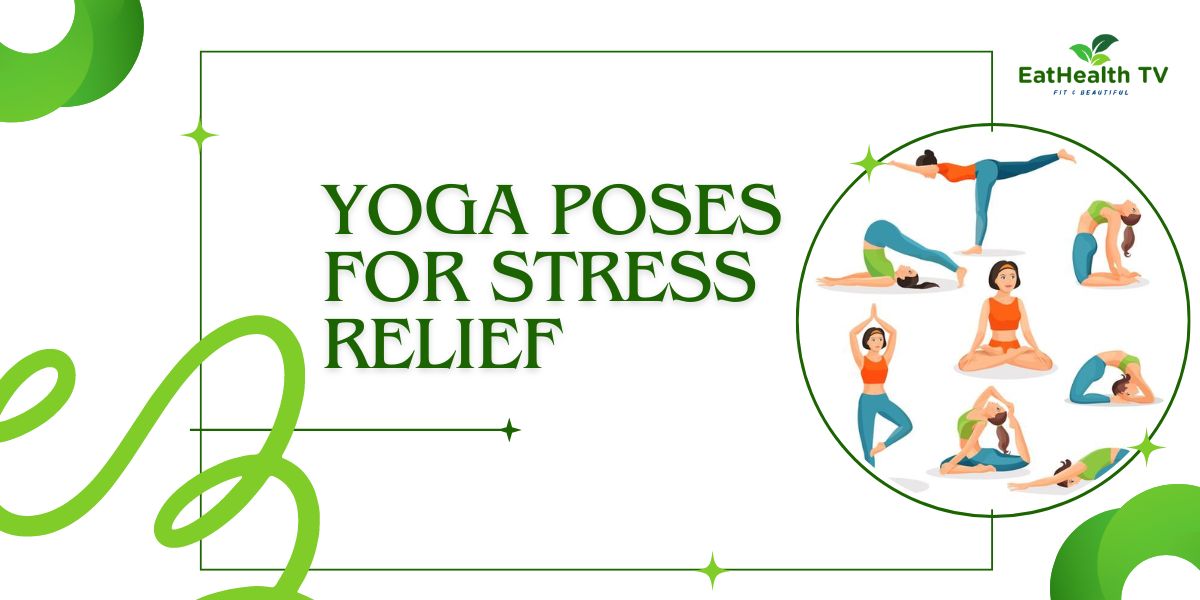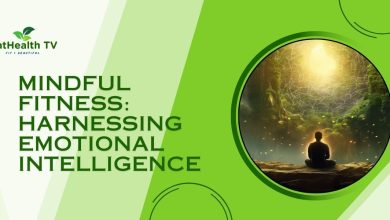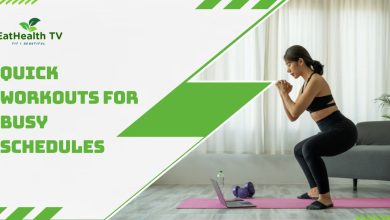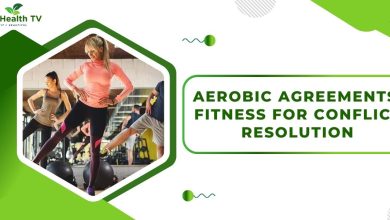Yoga Poses for Stress Relief
Transform Your Life: Powerful Yoga Poses for Instant Stress Relief

Yoga Poses for Stress Relief: A Comprehensive Guide
In today’s fast-paced world, stress has become a ubiquitous part of daily life. Whether you’re a 12th-grade student juggling academic pressures or a seasoned professional managing career demands, stress can take a toll on your physical and mental health. Fortunately, yoga offers a powerful antidote to stress. Through mindful movement, breath control, and meditation, yoga can help you find calm amidst the chaos. This comprehensive guide explores the best yoga poses for stress relief, providing a detailed explanation of each pose, its benefits, and how to perform it correctly.
Understanding Stress and Its Impact
Before diving into the specific yoga poses, it’s essential to understand what stress is and how it affects your body and mind. Stress is a natural response to perceived threats or challenges. It triggers the release of hormones like adrenaline and cortisol, which prepare your body for a “fight or flight” response. While short-term stress can be beneficial, chronic stress can lead to a host of health problems, including:
- Anxiety and depression
- High blood pressure
- Heart disease
- Digestive issues
- Sleep disturbances
- Weakened immune system
Yoga can mitigate these effects by promoting relaxation, reducing muscle tension, and enhancing overall well-being. Just as we know Benefits of Yoga in Daily Life
The Science Behind Yoga and Stress Relief
Yoga combines physical postures (asanas), breath control (pranayama), and meditation (dhyana) to create a holistic approach to stress management. Here’s how each component works:
- Asanas: Physical postures help release tension, improve flexibility, and increase blood flow, which in turn reduces stress levels.
- Pranayama: Breath control techniques calm the nervous system, lower blood pressure, and reduce the heart rate.
- Dhyana: Meditation techniques quiet the mind, promote mindfulness, and enhance emotional regulation.
Key Benefits of Yoga for Stress Relief
- Reduces Cortisol Levels: Yoga has been shown to lower cortisol, the primary stress hormone.
- Improves Mood: Regular practice increases the production of mood-enhancing neurotransmitters like serotonin and dopamine.
- Enhances Sleep Quality: Yoga can improve sleep patterns by calming the mind and relaxing the body.
- Boosts Immune Function: By reducing stress, yoga strengthens the immune system.
- Promotes Mindfulness: Yoga encourages present-moment awareness, reducing rumination and anxiety.
Top Yoga Poses for Stress Relief
1. Child’s Pose (Balasana)
Benefits: Child’s Pose is a gentle resting pose that calms the mind and relieves tension in the body. It stretches the hips, thighs, and ankles while reducing stress and fatigue.
How to Perform:
- Kneel on the floor with your big toes touching and knees spread apart.
- Sit back on your heels and extend your arms forward, resting your forehead on the mat.
- Breathe deeply, allowing your body to relax and sink into the pose.
- Hold for 1-3 minutes, focusing on your breath.
2. Cat-Cow Pose (Marjaryasana-Bitilasana)
Benefits: This dynamic combination of two poses helps relieve tension in the spine, improves flexibility, and promotes a sense of calm. It also massages the organs and stimulates the digestive system.
How to Perform:
- Start on your hands and knees in a tabletop position.
- Inhale and arch your back (Cow Pose), lifting your head and tailbone towards the ceiling.
- Exhale and round your spine (Cat Pose), tucking your chin to your chest and drawing your belly button towards your spine.
- Continue flowing between Cat and Cow for 1-2 minutes, synchronizing your movements with your breath.
3. Standing Forward Bend (Uttanasana)
Benefits: This pose stretches the hamstrings, calves, and lower back. It helps to calm the mind, relieve stress, and reduce fatigue. It also promotes blood flow to the brain, enhancing clarity and focus.
How to Perform:
- Stand with your feet hip-width apart and hands on your hips.
- Inhale and lengthen your spine.
- Exhale and hinge at your hips, folding forward and allowing your head and arms to hang toward the floor.
- Keep your knees slightly bent if needed to prevent strain on your lower back.
- Hold for 30 seconds to 1 minute, breathing deeply and relaxing into the stretch.
4. Downward-Facing Dog (Adho Mukha Svanasana)
Benefits: Downward-Facing Dog is an excellent pose for relieving stress and anxiety. It stretches the entire body, strengthens the arms and legs, and calms the nervous system.
How to Perform:
- Start on your hands and knees in a tabletop position.
- Tuck your toes under and lift your hips towards the ceiling, straightening your legs.
- Press your hands firmly into the mat and keep your head between your arms, ears aligned with your upper arms.
- Hold for 1-3 minutes, breathing deeply and focusing on lengthening your spine.
5. Bridge Pose (Setu Bandhasana)
Benefits: Bridge Pose opens the chest, heart, and shoulders, promoting a sense of openness and relaxation. It strengthens the back and glutes while calming the mind and reducing anxiety.
How to Perform:
- Lie on your back with your knees bent and feet hip-width apart, flat on the floor.
- Place your arms by your sides, palms facing down.
- Inhale and lift your hips towards the ceiling, pressing your feet and arms into the mat.
- Hold for 30 seconds to 1 minute, breathing deeply and relaxing your body.
6. Legs Up the Wall Pose (Viparita Karani)
Benefits: This restorative pose is excellent for relieving stress, anxiety, and fatigue. It improves circulation, reduces swelling in the legs, and promotes relaxation.
How to Perform:
- Sit close to a wall and swing your legs up onto the wall as you lower your back to the floor.
- Adjust your position so that your hips are close to the wall and your legs are straight up.
- Rest your arms by your sides, palms facing up.
- Close your eyes and breathe deeply, holding the pose for 5-10 minutes.
7. Corpse Pose (Savasana)
Benefits: Savasana is the ultimate relaxation pose, often used at the end of a yoga practice. It allows the body to rest and integrate the benefits of the practice, promoting deep relaxation and stress relief.
How to Perform:
- Lie flat on your back with your legs extended and arms resting by your sides, palms facing up.
- Close your eyes and focus on your breath, allowing your body to relax completely.
- Stay in Savasana for 5-10 minutes, breathing deeply and letting go of any tension.
8. Extended Triangle Pose (Utthita Trikonasana)
Benefits: This pose stretches and strengthens the legs, hips, and spine while opening the chest and shoulders. It helps to reduce stress and anxiety by promoting balance and stability.
How to Perform:
- Stand with your feet wide apart, about 3-4 feet.
- Turn your right foot out 90 degrees and your left foot slightly in.
- Extend your arms out to the sides, parallel to the floor.
- Inhale and reach your right hand forward, then exhale and hinge at your right hip to bring your right hand down to your shin or the floor.
- Extend your left arm towards the ceiling, keeping your chest open.
- Hold for 30 seconds to 1 minute, then repeat on the other side.
9. Seated Forward Bend (Paschimottanasana)
Benefits: This pose stretches the hamstrings, lower back, and spine. It calms the mind, relieves stress, and reduces fatigue. It also stimulates the liver, kidneys, ovaries, and uterus.
How to Perform:
- Sit on the floor with your legs extended straight in front of you.
- Inhale and lengthen your spine.
- Exhale and hinge at your hips, reaching your hands towards your feet.
- Keep your spine long and avoid rounding your back.
- Hold for 1-3 minutes, breathing deeply and relaxing into the stretch.
10. Reclining Bound Angle Pose (Supta Baddha Konasana)
Benefits: This restorative pose opens the hips and groin, promotes relaxation, and relieves stress and anxiety. It also stimulates the heart and improves circulation.
How to Perform:
- Lie on your back and bring the soles of your feet together, allowing your knees to fall out to the sides.
- Place a bolster or folded blankets under your knees for support if needed.
- Rest your arms by your sides, palms facing up.
- Close your eyes and breathe deeply, holding the pose for 5-10 minutes.
11. Tree Pose (Vrikshasana)
Benefits: Tree Pose improves balance and focus while strengthening the legs and core. It calms the mind, reduces stress, and promotes a sense of stability and grounding.
How to Perform:
- Stand with your feet together and arms by your sides.
- Shift your weight onto your left foot and bring your right foot to rest on your left inner thigh or calf (avoid placing it on your knee).
- Bring your hands to your heart in a prayer position or extend them overhead.
- Focus on a point in front of you to help maintain balance.
- Hold for 30 seconds to 1 minute, then repeat on the other side.
12. Camel Pose (Ustrasana)
Benefits: Camel Pose stretches the entire front of the body, including the chest, abdomen, and thighs. It improves posture, reduces anxiety, and stimulates the nervous system.
How to Perform:
- Kneel on the floor with your knees hip-width apart and hands on your lower back.
- Inhale and lift your chest, arching your back and reaching your hands to your heels.
- Keep your head in a neutral position or gently drop it back if comfortable.
- Hold for 30 seconds to 1 minute, breathing deeply and relaxing into the pose.
13. Happy Baby Pose (Ananda Balasana)
Benefits: This playful pose stretches the inner thighs, groin, and lower back. It relieves stress, calms the mind, and promotes relaxation.
How to Perform:
- Lie on your back and bring your knees towards your chest.
- Grab the outer edges of your feet with your hands, keeping your knees bent.
- Gently pull your feet towards the floor, opening your hips and stretching your inner thighs.
- Hold for 1-3 minutes, breathing deeply and relaxing into the stretch.
14. Pigeon Pose (Eka Pada Rajakapotasana)
Benefits: Pigeon Pose deeply stretches the hips, glutes, and lower back. It relieves tension, reduces stress, and promotes relaxation.
How to Perform:
- Start in a tabletop position and bring your right knee forward, placing it behind your right wrist.
- Extend your left leg straight back, keeping your hips squared.
- Lower your torso towards the floor, resting on your forearms or forehead.
- Hold for 1-3 minutes, breathing deeply and relaxing into the stretch.
- Repeat on the other side.
15. Fish Pose (Matsyasana)
Benefits: Fish Pose opens the chest, throat, and shoulders. It reduces stress and anxiety, improves posture, and stimulates the thyroid and parathyroid glands.
How to Perform:
- Lie on your back with your legs extended and arms by your sides.
- Slide your hands under your hips, palms facing down.
- Press your forearms into the floor and lift your chest, arching your back and bringing the crown of your head to the floor.
- Hold for 30 seconds to 1 minute, breathing deeply and relaxing into the pose.
Integrating Yoga into Your Daily Routine
Incorporating yoga into your daily routine doesn’t have to be time-consuming or complicated. Here are some tips to help you get started:
- Set Aside Time: Dedicate at least 10-20 minutes each day for your yoga practice. Morning or evening times can be particularly effective for stress relief.
- Create a Comfortable Space: Find a quiet, comfortable space where you can practice without distractions. Use a yoga mat, props, and soothing music to enhance your experience.
- Be Consistent: Consistency is key to reaping the benefits of yoga. Aim to practice regularly, even if it’s just for a few minutes each day.
- Listen to Your Body: Pay attention to your body’s signals and modify poses as needed. Avoid pushing yourself too hard and practice with mindfulness and awareness.
- Combine with Other Stress-Relief Techniques: Yoga can be even more effective when combined with other stress-relief techniques such as meditation, deep breathing, and progressive muscle relaxation.
Conclusion
Yoga is a powerful tool for managing stress and promoting overall well-being. The poses outlined in this guide offer a comprehensive approach to stress relief, combining physical movement, breath control, and mindfulness. By incorporating these poses into your daily routine, you can experience reduced stress levels, improved mood, and enhanced physical and mental health.
Remember, the key to a successful yoga practice is consistency and mindfulness. Whether you’re a beginner or an experienced practitioner, these poses can help you find calm and balance in your life. So, roll out your mat, take a deep breath, and embark on a journey to stress-free living with yoga. Namaste.




